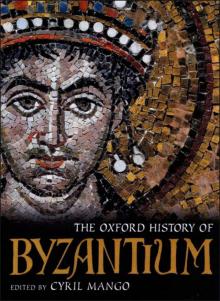Read The Oxford History of Byzantium Storyline:
The Oxford History of Byzantium is the only history to provide in concise form detailed coverage of Byzantium from its Roman beginnings to the fall of Constantinople and assimilation into the Turkish Empire. Lively essays and beautiful illustrations portray the emergence and development of a distinctive civilization, covering the period from the fourth century to the mid-fifteenth century. The authors - all working at the cutting edge of their particular fields - outline the political history of the Byzantine state and bring to life the evolution of a colourful culture.In AD 324, the Emperor Constantine the Great chose Byzantion, an ancient Greek colony at the mouth of the Thracian Bosphorous, as his imperial residence. He renamed the place 'Constaninopolis nova Roma', 'Constantinople, the new Rome' and the city (modern Istanbul) became the Eastern capital of the later Roman empire. The new Rome outlived the old and Constantine's successors continued to regard themselves as the legitimate emperors of Rome, just as their subjects called themselves Romaioi, or Romans long after they had forgotten the Latin language. In the sixteenth century, Western humanists gave this eastern Roman empire ruled from Constantinople the epithet 'Byzantine'.Against a backdrop of stories of emperors, intrigues, battles, and bishops, this Oxford History uncovers the hidden mechanisms - economic, social, and demographic - that underlay the history of events. The authors explore everyday life in cities and villages, manufacture and trade, machinery of government, the church as an instrument of state, minorities, education, literary activity, beliefs and superstitions, monasticism, iconoclasm, the rise of Islam, and the fusion with Western, or Latin, culture. Byzantium linked the ancient and modern worlds, shaping traditions and handing down to both Eastern and Western civilization a vibrant legacy.From Publishers WeeklyThe Byzantine Empire receives a wide-ranging but unfocused treatment in this volume of essays by U.S. and U.K. academic historians. Several chapters provide a comprehensive if somewhat rushed chronicle of the empire, from the founding of Constantinople to its conquest by the Ottomans in the 15th century. Others discuss aspects of Byzantine Christianity, social life and literature, while Byzantine art and architecture are abundantly represented in the many photos and full-color plates of castles, monasteries, mosaics and icons. Individual essays are intelligent and clearly written, but also somewhat dry and noncommittal; while broadly representative of contemporary scholarship, they do not quite add up to a compelling portrait of Byzantine civilization. Writers complain of the paucity and unreliability of Byzantine sources, and sometimes shy away from decisive historical interpretations. Political history chapters, which focus on the deeds of the emperors and the relatives, generals and miscellaneous usurpers who were forever overthrowing them, are a welter of conspiracies, rebellions, blindings and revenge blindings that can only be described as, well, Byzantine. And in a narrative crammed with battles and campaigns, there is little in-depth discussion of the Byzantine military as an institution and a fighting force-a curious oversight for a study of an empire that was often fighting for its life. Color and b&w photos and illustrations throughout. Copyright 2002 Reed Business Information, Inc. From Library JournalEditor Mango, professor of Byzantine and modern Greek language and literature at Oxford from 1973 to 1995, has assembled many of the world's leading scholars of Byzantine studies to contribute essays for this ambitious volume, which can best be described as a narrative history by diverse hands. The subject is enormous, and these essays attempt to illuminate the course of Byzantine history and focus on key political and cultural issues in under 400 pages. This is a remarkable achievement, considering that Byzantine civilization endured over 1100 years. In his excellent itntroduction, Mango addresses the question of when Byzantium, as a distinct political and cultural identity, came into being. He sees it evolving, like medieval Europe, out of the period we call Late Antiquity, which spans the reorganization of Roman government in the late third century to the collapse of urban life outside of Constantinople owing to the almost chronic warfare of the seventh century. Out of the ruins of the classical world, medieval Europe and Byzantium emerged as distinct civilizations. With over 150 illustrations, this work offers a wider spectrum of viewpoints than the Byzantine histories of John Norwich or Warren Treadgold. Highly recommended not only for scholars and students of Byzantium but also for general interested readers.Robert J. Andrews, Duluth Copyright 2002 Reed Business Information, Inc.Pages of The Oxford History of Byzantium :
